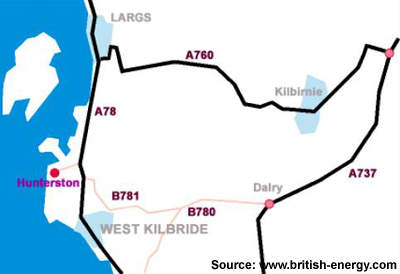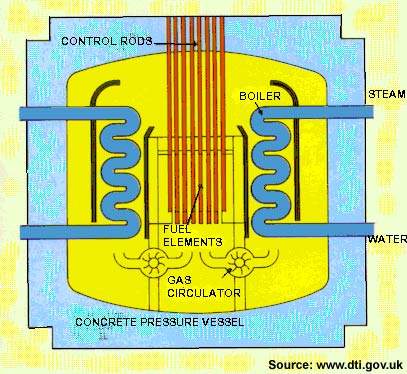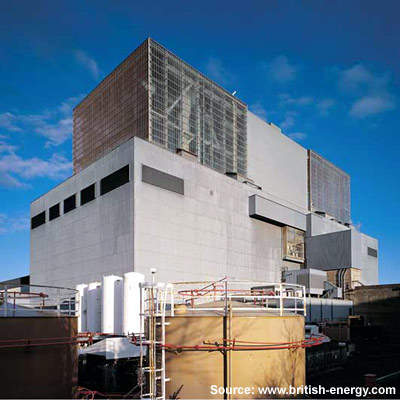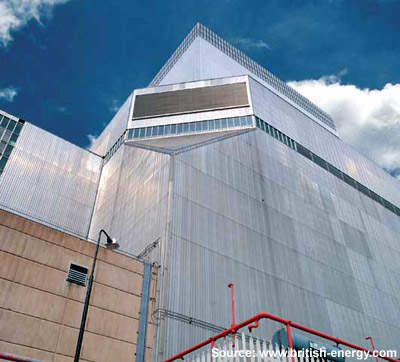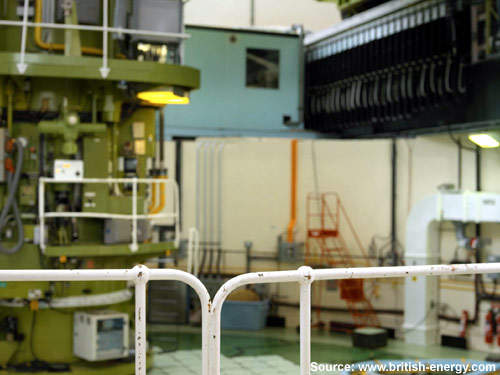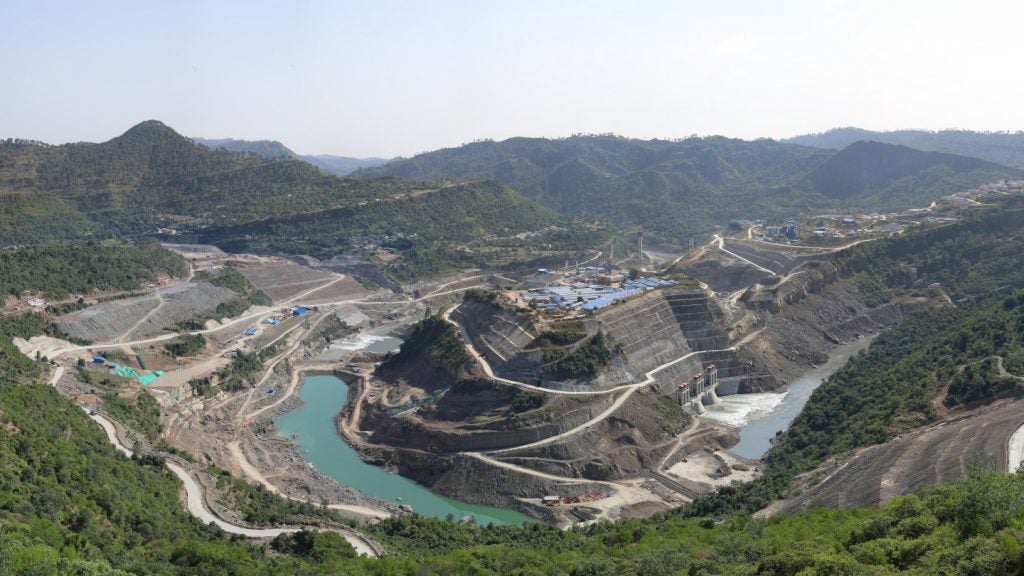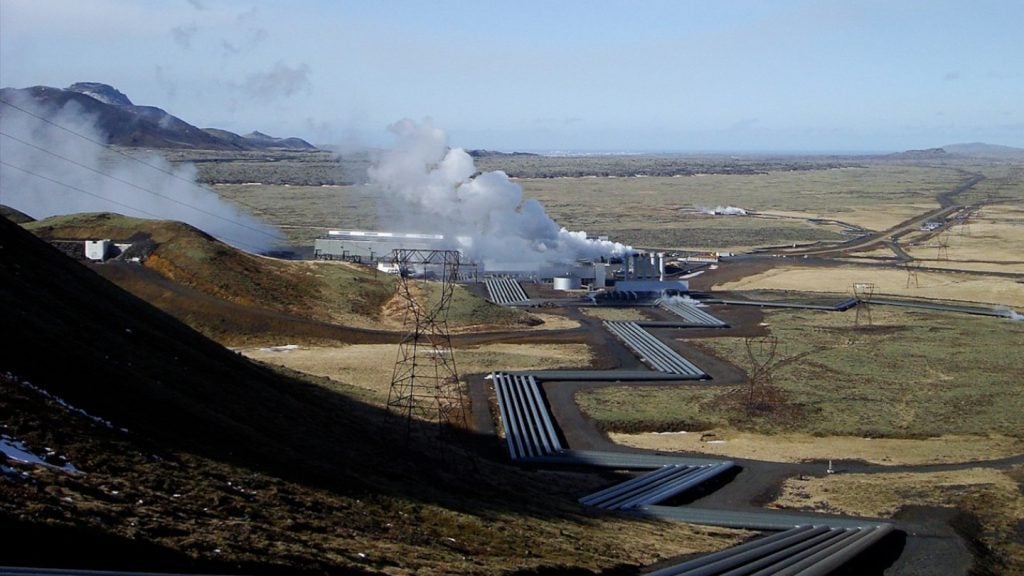The lifetime of Hunterston B nuclear power station in Scotland has been extended by another five years, to the end of 2016. The 1,288MW station uses two parallel 610MWe (nominal) advanced gas-cooled reactors (AGRs), although these no longer run at full power.
The power station is operated by British Energy plc and is located about 3km northwest of West Kilbride in North Ayrshire, Scotland. It started construction in 1967, was commissioned in 1976 and was previously planned for closure in 2011. Hunterston B employs about 670 staff and brings in an estimated £55m a year to the local economy. It generates enough electricity to supply almost half the households in Scotland.
HUNTERSTON LIFE EXTENDED TO 2016
Hunterston B has been working at around 60% load, with boiler balancing work during planned outages planned to raise this to around 70%. At this loading, British Energy calculated that the life extension is economically viable at a power price of about £27/MWh. It will also look at the potential and costs for increasing the figure to above 70%.
The decision extends the life of the station to a total of 40 years, and further studies will be conducted by 2013 regarding the potential for additional life extension beyond 2016. British Energy reviewed safety against the most current safety standards, and the UK’s Nuclear Installations Inspectorate recommended a programme of improvements based on the findings.
British Energy at the same time announced a similar extension for Hinkley Point B (Hunterston B’s sister station near Bridgwater in Somerset), together costing around £65m. The company expects to spend an extra £90m between April 2008 and 2011 on the two stations.
SECOND GENERATION UK REACTOR
Nuclear reactors sustain a controlled fission chain reaction, with the reactor core contained in a pressure vessel and shield. The core contains the fissile material with a (usually) graphite or water moderator which slows the neutrons so that a chain reaction occurs.
Neutron-absorbing control rods can control or stop the reaction as they are inserted into the core. Water, gas or other coolant conveys the generated heat to a boiler, which produces steam to drive a turbine.
Hunterston B is a development of the Magnox gas-cooled reactors used at Hunterston ‘A’, which is now being decommissioned. That was one of the first generation of UK nuclear stations. Magnox reactors use natural uranium metal as fuel, and have a graphite moderator with pressurised CO2 as coolant.
Early designs had the core contained within a steel pressure vessel surrounded by a steel and concrete shield over 1m thick, with the boilers outside the shield. Later designs have a steel-lined pre-stressed concrete pressure vessel which also acts as the shield, with the boilers contained inside.
ADVANCED GAS-COOLED REACTORS (AGRS)
AGRs use enriched uranium-clad stainless steel cans, also with graphite moderator and pressurised CO2 coolant, which allow the AGRs to operate at a higher temperature than Magnox reactors.
AGRs are encased in a steel-lined pre-stressed concrete pressure vessel several metres thick, with the boilers again inside. The coolant conveys heat from the reactor to the boilers which, in turn, heat water in an isolated steam circuit to turn the turbines.
SAFETY PROBLEMS AT HUNTERSTON
In 2006, British Energy found cracks in one of the two reactors at Hunterston B, with almost a fifth of the 500 boiler tubes experiencing defects. Power Technology in August 2007 reported a sharp decline in output, with the high operating temperatures having led to wear and tear.
For these reasons, anti-nuclear campaigners have called the plant unreliable, saying it should close altogether. They are reported to object to the country spending millions of pounds more on ‘outdated’ power stations, while adding even more waste to the growing nuclear pile.

